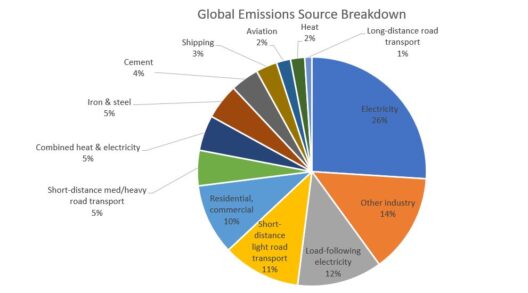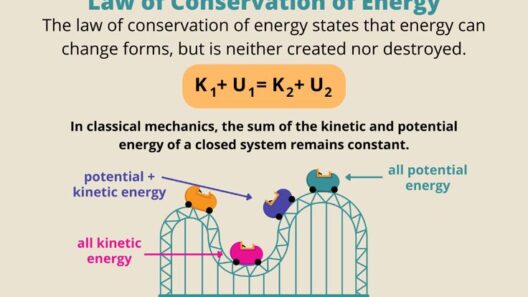The conundrum of conserving energy within the walls of hospitals embodies a profound challenge—one that juxtaposes the imperative of delivering life-saving care with the pressing necessity to mitigate environmental impacts. As we venture into the realm of healthcare, it becomes unequivocally clear that hospitals operate as both sanctuaries of healing and beacons of sustainability. By implementing innovative energy-conservation strategies, these institutions not only enhance their operational efficiency but also resonate as paragons of ecological stewardship.
Conservation in hospitals can be likened to a well-tuned orchestra, where each instrument must play its part harmoniously, resulting in a symphony of well-managed resources. The multifaceted approach to energy conservation encompasses a variety of processes, technologies, and policies—all aimed at harmoniously aligning the needs of patient care with the realities of dwindling natural resources.
1. Energy Audits: The Foundation of Conservation
The first step in any energy-conservation endeavor lies in conducting comprehensive energy audits. This acts as a diagnostic tool, revealing the consumption patterns and inefficiencies that abound within the facility. Through meticulous data collection and analysis, hospitals can identify energy-hungry equipment and practices that unwittingly escalate expenditure and environmental impact. Audits not only highlight areas where wattage can be alleviated but unveil opportunities for upgrades and retrofitting that enhance energy efficiency.
2. Smart Technology: The Digital Guardians
In the 21st century, integrating smart technologies into hospital infrastructure stands as a paramount strategy for energy conservation. IoT (Internet of Things) devices can monitor and control energy usage in real-time, ensuring that lighting, heating, and cooling systems operate only when necessary. Automated systems can adjust for peak and off-peak hours, providing significant savings while maintaining a comfortable environment for patients and staff alike. Such digital guardians not only mitigate waste but pave the way for a more calculated and efficient system of energy management.
3. LED Lighting: Shedding Light on Efficiency
Lighting is a fundamental aspect of any hospital, yet it often represents a significant portion of overall energy consumption. Transitioning from incandescent to light-emitting diode (LED) lighting systems can result in substantial energy savings. LEDs last longer and draw significantly less power, making them an exemplary choice for facilities eager to lighten their energy load. Furthermore, when combined with smart controls, these efficient lighting solutions can adapt to natural light levels, thereby further reducing energy consumption.
4. HVAC Systems: The Breath of Life
Heating, ventilation, and air conditioning (HVAC) systems play a critical role in hospitals, yet they can also be conspicuous energy guzzlers. Retrofitting existing systems with energy-efficient units or implementing variable air volume systems can considerably decrease energy usage. Additionally, regular maintenance—including filter changes and system checks—ensures that HVAC systems operate at peak efficiency. Optimizing these vital systems can profoundly impact energy consumption, paralleling the attentive care one provides to patients.
5. Renewable Energy Sources: Nature’s Gifts
To truly embody the mantle of sustainability, hospitals must consider the integration of renewable energy sources such as solar panels and wind turbines. Harnessing the bounties of nature not only diminishes reliance on nonrenewable power but also fortifies the hospital’s energy independence. As hospitals embrace the installation of solar photovoltaic systems, they can gradually diminish their carbon footprint while creating a more resilient energy portfolio. It’s akin to transforming a barren field into a flourishing garden—each panel or turbine representing a commitment to a healthier planet.
6. Water Conservation: The Lifeblood of Efficiency
Though often overshadowed by energy consumption, water conservation is an integral part of broader energy-saving initiatives. Hospitals consume vast quantities of water, often for processes that can be optimized. Implementing low-flow fixtures and educating staff about responsible water use can substantially reduce water waste. Furthermore, by minimizing the energy required to heat and transport water within the facility, hospitals can further reduce their overall energy consumption, creating a ripple effect of efficiency that benefits both the environment and operational efficacy.
7. Staff Engagement: Cultivating a Culture of Conservation
The efficacy of any energy-conservation strategy is contingent upon the involvement of all hospital staff. Cultivating a culture of sustainability requires ongoing education and engagement. Workshops, training sessions, and informational campaigns can empower healthcare professionals to recognize the magnitude of their impact and adopt energy-efficient practices. When staff buy into the ethos of conservation, the hospital’s energy demands can diminish organically, akin to a united community working toward a common goal.
8. Policy and Regulations: The Framework of Action
Finally, the implementation of energy-conservation strategies necessitates robust policies and regulatory frameworks that underscore the hospital’s commitment to sustainability. Uniting management and staff under clear guidelines fosters accountability and ensures consistent efforts toward energy reduction. Having benchmark goals and measurable outcomes allows for continuous improvement, creating a virtuous cycle of sustainability and efficiency.
In conclusion, the journey toward energy conservation in hospitals is an odyssey of innovation, commitment, and collaboration. By embarking on this path, healthcare facilities can transcend their traditional roles as mere providers of care to become vanguards of sustainable practice. Through concerted efforts in energy audits, the integration of smart technologies, and engagement with staff, hospitals can ensure they are not only healing bodies but also nurturing the environment. In the complex interplay of health and sustainability, the ultimate beneficiaries are the communities that rely on these institutions for their most vulnerable moments. The time for hospitals to illuminate their path to a greener future is now, and the instruments of change are readily available, awaiting the harmonious orchestration of dedicated action.








